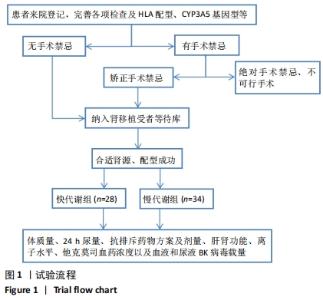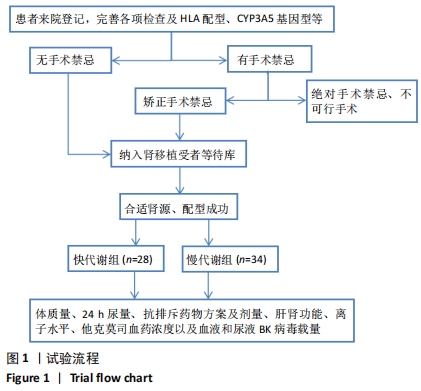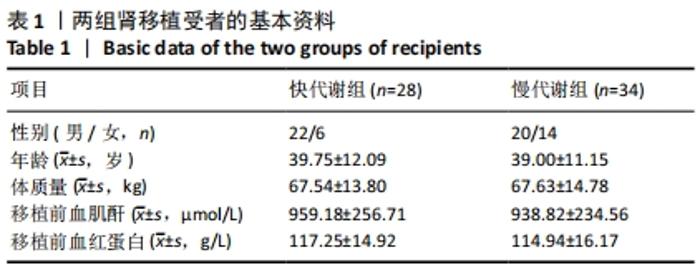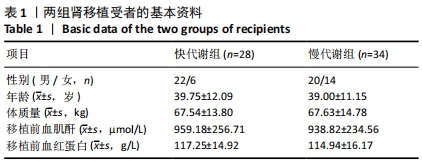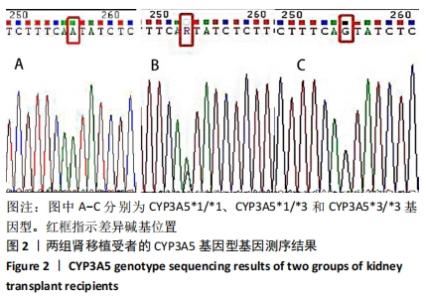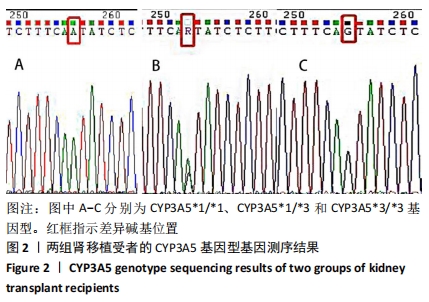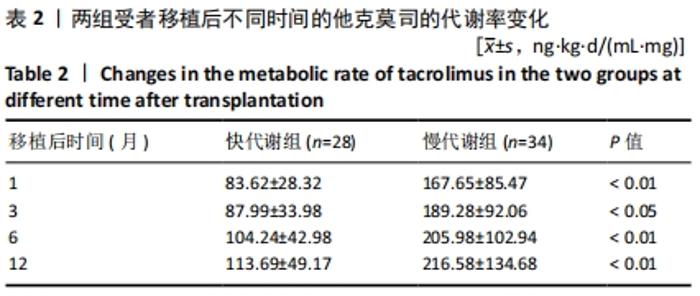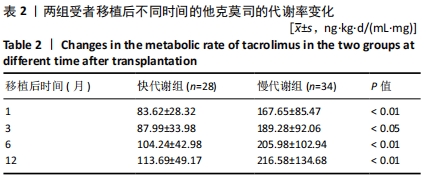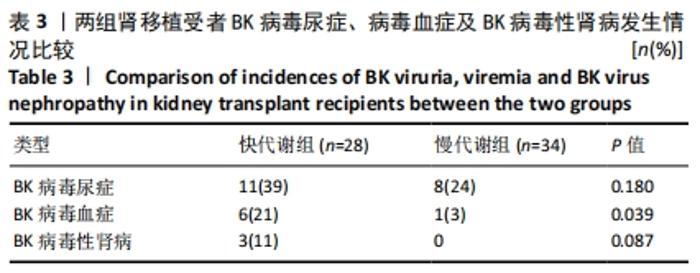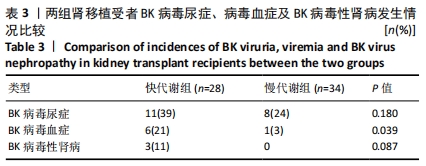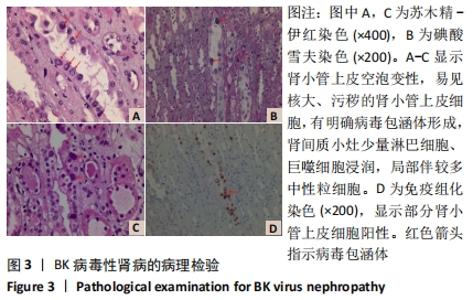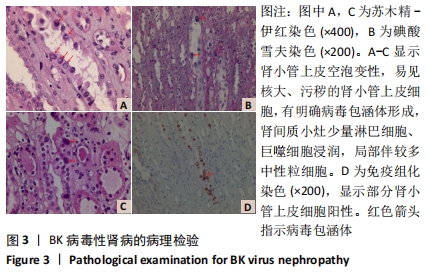[1] SAWINSKI D, GORAL S. BK virus infection: an update on diagnosis and treatment. Nephrol Dial Transplant. 2015;30(2):209-217.
[2] PARK WY, KANG SS, JIN K, et al. Long-term prognosis of BK virus-associated nephropathy in kidney transplant recipients. Kidney Res Clin Pract. 2018; 37(2):167-173.
[3] AHLENSTIEL-GRUNOW T, PAPE L. Immunosuppression, BK polyomavirus infections, and BK polyomavirus-specific T cells after pediatric kidney transplantation. Pediatr Nephrol. 2020;35(4):625-631.
[4] DEMEY B, TINEZ C, FRANÇOIS C, et al. Risk factors for BK virus viremia and nephropathy after kidney transplantation: A systematic review. J Clin Virol. 2018;109:6-12.
[5] HIRSCH HH, VINCENTI F, FRIMAN S, et al. Polyomavirus BK replication in de novo kidney transplant patients receiving tacrolimus or cyclosporine: a prospective, randomized, multicenter study. Am J Transplant. 2013;13(1): 136-145.
[6] SHENAGARI M, MONFARED A, EGHTEDARI H, et al. BK virus replication in renal transplant recipients: Analysis of potential risk factors may contribute in reactivation. J Clin Virol. 2017;96:7-11.
[7] 李平,程东瑞,季曙明,等.肾移植术后BK病毒感染及危险因素分析[J].医学研究生学报,2017,30(5):525-529.
[8] LARGEAU B, GUELLEC CB, LONGUET H, et al. Comparison of Tacrolimus Starting Doses Based on CYP3A5 Phenotype or Genotype in Kidney Transplant Recipients. Prog Transplant. 2019;29(4):300-308.
[9] CHEN L, PRASAD GVR. CYP3A5 polymorphisms in renal transplant recipients: influence on tacrolimus treatment. Pharmgenomics Pers Med. 2018;11:23-33.
[10] BURK O, KOCH I, RAUCY J, et al. The induction of cytochrome P450 3A5 (CYP3A5) in the human liver and intestine is mediated by the xenobiotic sensors pregnane X receptor (PXR) and constitutively activated receptor (CAR). J Biol Chem. 2004;279(37):38379-38385.
[11] THÖLKING G, FORTMANN C, KOCH R, et al. The tacrolimus metabolism rate influences renal function after kidney transplantation. PLoS One. 2014; 9(10):e111128.
[12] 谢轲楠,陈劲松.移植肾 BK 病毒肾病发病机制及治疗[J].肾脏病与透析肾移植杂志,2016,25(5):484-488.
[13] BALBA GP, JAVAID B, TIMPONE JG JR. BK polyomavirus infection in the renal transplant recipient. Infect Dis Clin North Am. 2013;27(2):271-283.
[14] HIRSCH HH, KNOWLES W, DICKENMANN M, et al. Prospective study of polyomavirus type BK replication and nephropathy in renal-transplant recipients. N Engl J Med. 2002;347(7):488-496.
[15] NICKELEIT V, HIRSCH HH, ZEILER M, et al. BK-virus nephropathy in renal transplants-tubular necrosis, MHC-class II expression and rejection in a puzzling game. Nephrol Dial Transplant. 2000;15(3):324-332.
[16] ZHANG X, LIU ZH, ZHENG JM, et al. Influence of CYP3A5 and MDR1 polymorphisms on tacrolimus concentration in the early stage after renal transplantation. Clin Transplant. 2005;19(5):638-643.
[17] KIZILBASH SJ, RHEAULT MN, BANGDIWALA A, et al. Infection rates in tacrolimus versus cyclosporine-treated pediatric kidney transplant recipients on a rapid discontinuation of prednisone protocol: 1-year analysis. Pediatr Transplant. 2017;21(4):10.
[18] LIU LS, LI J, CHEN XT, et al. Comparison of tacrolimus and cyclosporin A in CYP3A5 expressing Chinese de novo kidney transplant recipients: a 2-year prospective study. Int J Clin Pract Suppl. 2015;(183):43-52.
[19] LIN YS, DOWLING AL, QUIGLEY SD, et al. Co-regulation of CYP3A4 and CYP3A5 and contribution to hepatic and intestinal midazolam metabolism. Mol Pharmacol. 2002;62(1):162-172.
[20] HAN N, HA S, YUN HY, et al. Population pharmacokinetic-pharmacogenetic model of tacrolimus in the early period after kidney transplantation. Basic Clin Pharmacol Toxicol. 2014;114(5):400-406.
[21] THÖLKING G, SCHMIDT C, KOCH R, et al. Influence of tacrolimus metabolism rate on BKV infection after kidney transplantation. Sci Rep. 2016;6:32273.
[22] 孙忠蔚,范宇,柏宏伟,等.他克莫司代谢率与肾移植术后早期BK病毒感染的关系[J].器官移植,2018,9(4):278-282.
[23] 范宇,石炳毅,钱叶勇,等.肾移植术后BK病毒感染对移植肾功能影响的临床研究[J].器官移植,2018,9(1):51-57.
[24] GINEVRI F, DE SANTIS R, COMOLI P, et al. Polyomavirus BK infection in pediatric kidney-allograft recipients: a single-center analysis of incidence, risk factors, and novel therapeutic approaches. Transplantation. 2003;75(8):1266-1270.
[25] 潘国政,李势辉,戴帅,等.BK 病毒血症对肾移植术后受者和移植肾功能影响临床研究[J].中华移植杂志(电子版),2020,14(2):96-100.
[26] 赵磊,张洪宪,侯小飞,等.来氟米特联合羟苯磺酸钙治疗肾移植术后BK病毒相关性肾病[J].北京大学学报(医学版),2020,52(2):385-389.
|
